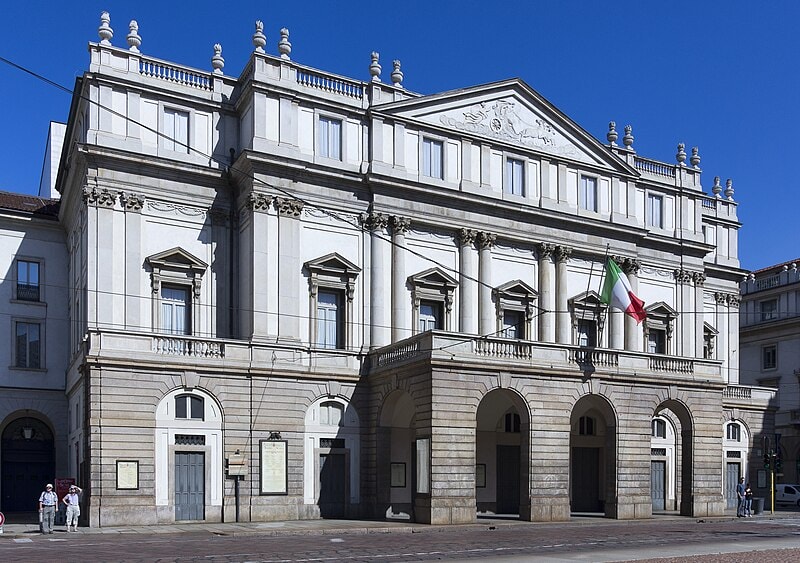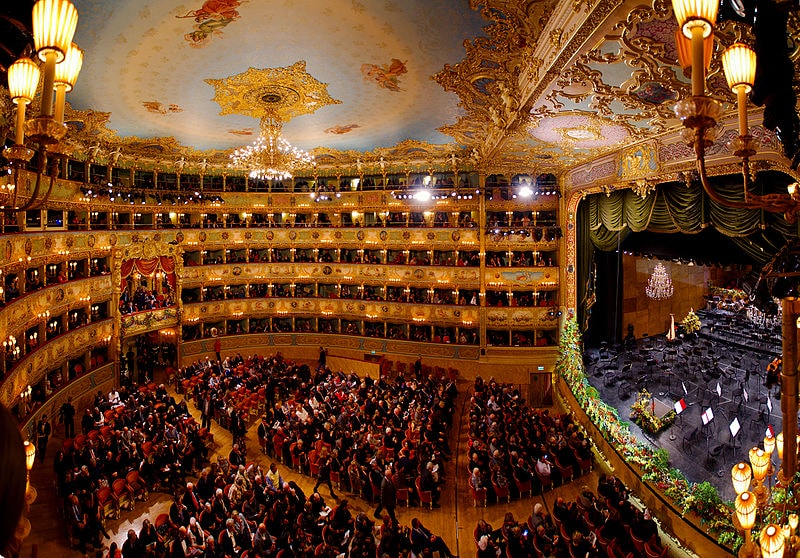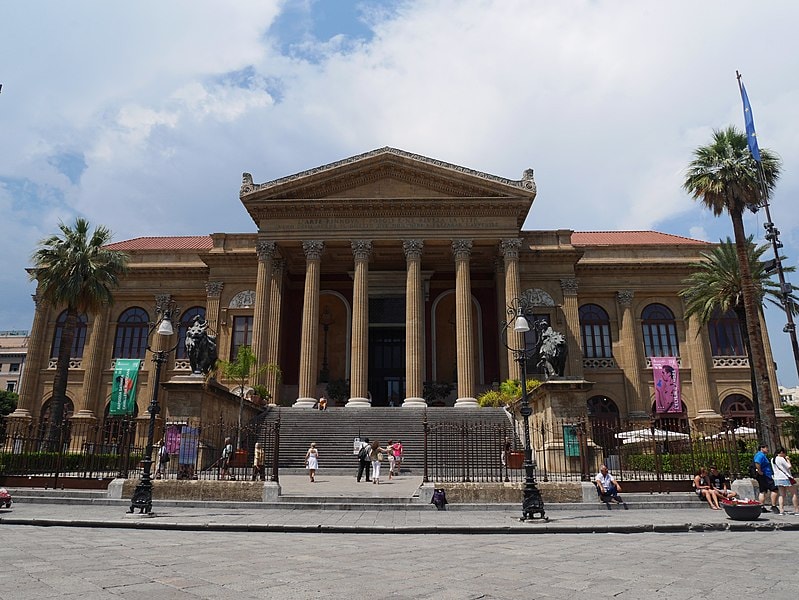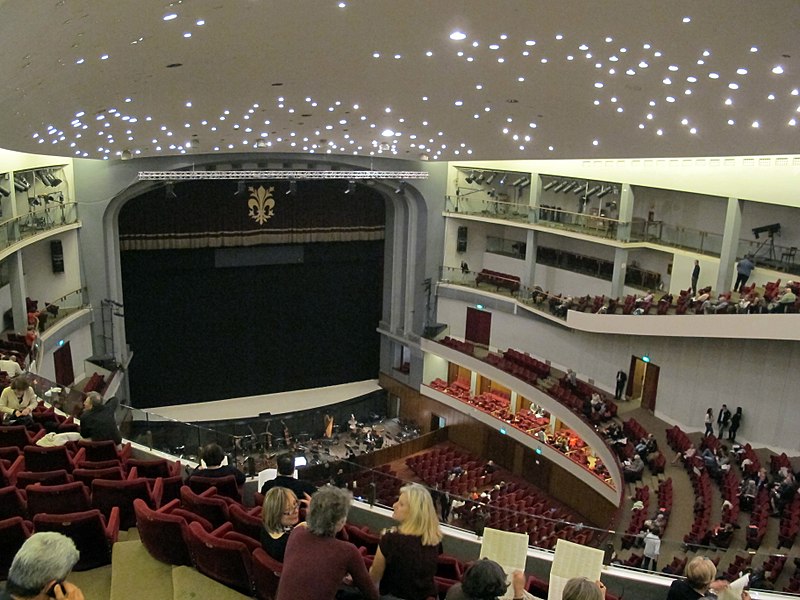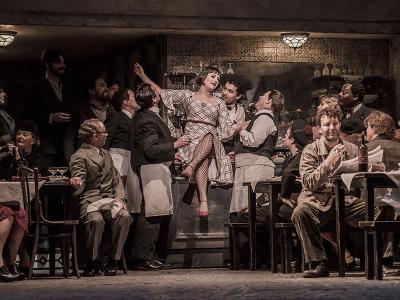Beginners guide to Italian opera
Italian opera has delighted audiences around the world for centuries.
With its rich history, captivating music, and emotionally charged storytelling, Italian opera remains a cornerstone of opera houses and western classical music to this day.
In this guide, we will delve into the origins, key composers, notable works, and main characteristics of Italian opera.
A Brief History of Italian Opera
Late Renaissance and Early Baroque Period (late 16th – early 17th century)
Italian opera originated in the late 16th century as a result of the Florentine Camerata’s experiments to recreate the style of ancient Greek drama. Jacopo Peri’s Dafne (1597) is often considered the first opera, followed by Claudio Monteverdi’s groundbreaking works like Orfeo (1607) and L’incoronazione di Poppea (1643). These early operas combined recitative singing with arias.
High Baroque Period (late 17th – early 18th century)
The Baroque era saw the development of distinct opera styles. Alessandro Scarlatti and George Frideric Handel played significant roles. Handel’s operas, such as Giulio Cesare (1724), showcased virtuosic singing and elaborate arias. Neapolitan opera also emerged during this period, with composers like Leonardo Vinci and Leonardo Leo contributing to its popularity.
Classical Period (late 18th – early 19th century)
Opera seria (a more serious style of Italian opera) declined in the late 18th century, giving way to Opera buffa, a style of comic opera with relatable themes. Composers like Giovanni Paisiello and Domenico Cimarosa excelled in this genre. Wolfgang Amadeus Mozart‘s Italian operas, including The Marriage of Figaro (1786) and Don Giovanni (1787), blended the serious and comic elements, showcasing his versatility.
Romantic Period (early 19th century)
The Romantic era saw the rise of bel canto opera, characterised by beautiful melodies and virtuosic singing. Gioachino Rossini‘s operas like The Barber of Seville (1816) exemplified this style. Vincenzo Bellini’s emotionally charged works, such as Norma (1831), and Gaetano Donizetti‘s prolific output, including Lucia di Lammermoor (1835), further shaped Italian opera during this period.
Verismo and Late Romantic Period (late 19th – early 20th century)
Italian opera evolved to incorporate realistic and naturalistic themes, a movement known as verismo. Pietro Mascagni’s Cavalleria Rusticana (1890) and Ruggero Leoncavallo’s Pagliacci (1892) exemplify this style. Giacomo Puccini‘s emotionally charged and melodically rich operas, like La Bohème (1896) and Madama Butterfly (1904), marked the pinnacle of late Romantic Italian opera.
20th Century and Beyond
Italian opera continued to evolve, with composers experimenting with different styles while maintaining the core elements of expressive singing and compelling drama. Notable composers include Giuseppe Verdi (late works like Falstaff) and lesser-known figures like Ottorino Respighi and Gian Carlo Menotti. While traditional Italian opera remains popular, contemporary composers like Luigi Dallapiccola, Gian Carlo Menotti and Luciano Berio have contributed to modernising the genre.
Italian opera’s legacy lives on through its timeless masterpieces, influential styles, and enduring impact on the world of music and theatre.
Italian opera composers
Monumental Italian composers have played a huge role in shaping the genre of Italian opera and contributing significantly to the broader world of opera.
Here, we’ll explore the contributions of some of the most famous Italian opera composers, as well as briefly touch upon non-Italian composers who made significant contributions to the genre of Italian opera.
Monumental Italian composers have played a huge role in shaping the genre of Italian opera and contributing significantly to the broader world of opera.
Here, we’ll explore the contributions of some of the most famous Italian opera composers, as well as briefly touch upon non-Italian composers who made significant contributions to the genre of Italian opera.
Gioachino Rossini (1792-1868):
Rossini is renowned for his vivacious and comedic operas, including Il barbiere di Siviglia and La Cenerentola His works are celebrated for their brilliant coloratura arias and sparkling overtures. Rossini’s compositions are marked by their infectious energy and humour, making him a central figure in the Italian opera tradition.
Video
Giuseppe Verdi (1813-1901):
Verdi’s name is synonymous with Italian opera.
His masterpieces like La Traviata, Rigoletto and Aida are cherished for their emotional depth and memorable melodies. Verdi’s operas often explore themes of love, politics, and human suffering, resonating deeply with audiences.
Video
Giacomo Puccini (1858-1924):
Puccini is celebrated for his lush and dramatic operas, such as Tosca, La Bohème and Madama Butterfly.
His ability to craft powerful arias and intricate character development has made him a beloved figure in the world of opera. Puccini’s operas often feature tragic love stories set against rich, atmospheric backdrops.
Video
Vincenzo Bellini (1801-1835):
Bellini’s operas, including Norma and I Puritani are known for their bel canto style, characterized by beautiful, lyrical vocal lines.
His works epitomize the elegance and expressive capabilities of the human voice, making him a pivotal figure in the evolution of Italian opera.
Video
Gaetano Donizetti (1797-1848):
Donizetti’s operas are celebrated for their melodic richness and vocal virtuosity. Works like Lucia di Lammermoor and Don Pasquale showcase his talent for crafting captivating characters and intricate ensembles. Donizetti’s contributions to Italian opera continue to be admired for their charm and wit.
Video
While these Italian composers stand out as leaders of the genre, it’s also worth noting the impact of non-Italian composers such as George Frideric Handel and Wolfgang Amadeus Mozart. Handel’s operas, such as Giulio Cesare, were composed to Italian librettos and contributed significantly to the development of Italian opera in the Baroque era. Mozart, though not Italian himself, composed some of his most famous operas, including The Marriage of Figaro and Don Giovanni, with Italian librettos, showcasing the enduring influence of Italian opera traditions on the broader operatic landscape.
Italian opera music
Italian opera is less so about the language it is written in and more so about the style.
It is characterised by several distinct features that define this style of opera.
Aria and Recitative
Aria and recitative are the two fundamental styles of vocal expression in Italian opera.
Recitative is used for dialogue and plot progression, employing a more speech-like delivery. Aria, on the other hand, is a solo vocal piece, often showcasing the emotional depth and virtuosity of the singer. Arias are typically more musically intricate and expressive, serving as moments of introspection and emotional climax.
Video
Video
Bel Canto
Bel canto, meaning “beautiful singing” in Italian, is a style that places great emphasis on the purity of vocal tone, phrasing, and expressiveness.
Composers like Gioachino Rossini, Vincenzo Bellini, and Gaetano Donizetti were instrumental in developing and popularising the bel canto style during the 19th century. This style allowed singers to display their vocal prowess through technically demanding arias and intricate ornamentation.
Passionate Storytelling
Italian opera is renowned for its emotional depth and dramatic storytelling.
The combination of music and drama creates a powerful platform for conveying intense human emotions, from love and joy to tragedy and despair. This dramatic element is a driving force behind the enduring popularity of Italian opera.
Ensembles and Choruses
While solo arias are a defining feature of Italian opera, ensembles and choruses also play crucial roles.
Ensembles bring multiple characters together to interact through music, and choruses provide a collective voice that enhances the dramatic impact of scenes.
Video
Video
Italian Opera has had a 400 year reign due to its artistic qualities, historical and cultural significance, dramatic storytelling, international influence, and iconic composers.
The spectacle and grandeur of the artform has also proved popular amongst worldwide audiences.
Italian Opera Songs
‘Nessun Dorma’ from Giacomo Puccini’s Turandot — This aria is one of the most famous in all of opera and is often associated with the legendary tenor Luciano Pavarotti.
‘La Donna è Mobile’ from Giuseppe Verdi’s Rigoletto — This lively aria is one of the most recognizable in the operatic repertoire.
‘Che gelida manina’ — from Giacomo Puccini’s La Boheme. This aria is sung by Rodolfo to Mimi, telling her of his life as a bohemian poet in Paris.
La Traviata — This opera by Giuseppe Verdi contains several memorable arias, including ‘Sempre libera’ and ‘Brindisi’
‘Casta Diva’ from Vincenzo Bellini’s Norma — This beautiful aria is known for its lyrical and haunting melody.
Video
‘Largo al Factotum’ from Gioachino Rossini’s Il barbiere di Siviglia — This comedic aria is sung by the character Figaro and is famous for its rapid-fire lyrics.
‘Un Bel Di Vedremo’ from Giacomo Puccini’s Madama Butterfly — This aria is sung by the character Cio-Cio San and is filled with emotion.
‘Vesti la Giubba’ from Ruggero Leoncavallo’s Pagliacci — This aria is sung by the character Canio and expresses his despair and heartbreak.
‘E Lucevan le Stelle’ from Giacomo Puccini’s Tosca — This aria is sung by the character Cavaradossi and is a passionate and tragic declaration of love.
‘Una Furtiva Lagrima’ from Gaetano Donizetti’s L’Elisir d’Amore — This aria is sung by the character Nemorino and is known for its lyrical beauty.
Video
Famous Italian Operas
La Traviata — Composed by Giuseppe Verdi tells the tragic love story of Violetta, a Parisian courtesan, and Alfredo Germont, a young nobleman. Their love faces societal judgment, illness, and ultimately, heartbreak.
Rigoletto — Composed by Giuseppe Verdi, Rigoletto revolves around the hunchbacked court jester Rigoletto, who seeks revenge against the Duke of Mantua for seducing his daughter
Carmen — Although originally written by Georges Bizet, Carmen is often associated with Italian opera due to its popularity. It portrays the passionate and destructive love affair between Carmen, a fiery gypsy, and Don José, a soldier.
Tosca — Giacomo Puccini’s Tosca is a political drama set in Rome, featuring the singer Floria Tosca and her lover, the artist Mario Cavaradossi, who become entangled in a plot against the tyrannical Chief of Police, Baron Scarpia.
The Barber of Seville (Il Barbiere di Siviglia) — Gioachino Rossini’s comic masterpiece centers on the efforts of Count Almaviva, aided by the wily Figaro, to win the heart of Rosina while outsmarting her guardian, Dr. Bartolo.
Aida — Giuseppe Verdi’s Aida is an epic set in ancient Egypt. It follows the love triangle between the Ethiopian princess Aida, the Egyptian warrior Radamès, and the Egyptian princess Amneris, against the backdrop of war and betrayal.
Madama Butterfly (Madam Butterfly) — Puccini’s tragic Madama Butterfly portrays the story of Cio-Cio-San, a young Japanese geisha, and her ill-fated marriage to the American naval officer Pinkerton, leading to heartbreaking consequences.
La Bohème — Another Puccini classic, La Bohème, depicts the lives of a group of struggling artists and their romantic entanglements in bohemian Paris. The central love story revolves around Rodolfo and Mimì.
Greatest Italian Opera Singers
Italian opera has produced some of the world’s most renowned male and female opera singers.
Below, you will find some of the most widely respected names along with brief descriptions of their key performances and reputations.
Greatest Italian Opera Singers
Male Italian Opera Singers
Luciano Pavarotti – Often considered one of the greatest tenors of all time, Pavarotti’s powerful and emotive voice captivated audiences worldwide. He is particularly celebrated for his role as Rodolfo in Puccini’s La Bohème and his iconic performance of ‘Nessun Dorma’ from Puccini’s Turandot.
Andrea Bocelli – Known for his lyrical tenor voice, Bocelli’s crossover success has introduced millions to Italian opera. His rendition of ‘Con te partirò’ (Time to Say Goodbye) with Sarah Brightman became an international sensation, showcasing his versatility.
Plácido Domingo – Although of Spanish origin, Domingo spent much of his career performing in Italian operas. His portrayal of the title role in Verdi’s Otello is legendary, earning him acclaim as a dramatic tenor.
Female Italian Opera Singers
Maria Callas – Often regarded as one of the greatest sopranos in history, Callas is known for her extraordinary vocal range and dramatic intensity. Her performances as Norma in Bellini’s Norma and Violetta in Verdi’s La Traviata are legendary.
Renata Tebaldi – Tebaldi’s warm and rich soprano voice made her a favourite in the Italian opera world. Her portrayal of Desdemona in Verdi’s Otello and her interpretation of Puccini’s heroines, like Mimi in La Bohème, earned her widespread acclaim.
Cecilia Bartoli – Bartoli is a mezzo-soprano known for her agility and expressive performances. Her rendition of Rossini’s ‘Cenerentola’ showcased her virtuosity, and she has continued to breathe new life into Baroque and bel canto repertoire.
Famous Italian opera houses
Italian opera houses are of rich historical significance and host world-class performances that attract global audiences.
They serve as living symbols of Italy’s cultural tradition and artistic excellence and foster the preservation and evolution of the opera as an art form.
Additionally, their economic impact through tourism and their role in nurturing new talent ensure their continued relevance in the world of music and culture.
Italian opera houses generally uphold a formal dress code, with patrons expected to wear elegant and sophisticated attire. This tradition reflects the historical significance of opera in Italian culture and emphasises the special nature of attending an opera performance.
Below is some information on some of Italy’s most prestigious opera houses.
Famous Italian opera houses
Teatro alla Scala (La Scala), Milan – Teatro alla Scala, commonly known as La Scala, is one of the most famous and prestigious opera houses in the world. It is celebrated for its exceptional acoustics and has hosted numerous renowned opera premieres. The dress code at La Scala is generally formal. Audience members are expected to wear elegant evening attire, including tuxedos and evening gowns.
Teatro La Fenice, Venice – Teatro La Fenice is celebrated for its historical importance and has been the site of many opera premieres by famous composers like Verdi and Rossini. It is a symbol of the revival of Italian opera after a fire destroyed the original theatre The dress code at Teatro La Fenice is formal, with guests typically wearing eveningwear, though it is slightly less strict compared to La Scala.
Teatro Massimo, Palermo – Teatro Massimo is Italy’s largest opera house and renowned for its stunning neoclassical architecture. It is notable for hosting grand productions and has attracted renowned performers. The dress code at Teatro Massimo is generally formal, similar to La Scala, with patrons expected to dress in elegant attire.
Teatro di San Carlo, Naples – Teatro di San Carlo is one of the oldest and most important opera houses in Europe. It is known for its opulent décor and its role in popularising the bel canto style. The dress code here is formal, with eveningwear such as tuxedos and evening gowns being usual.
Teatro Comunale, Florence –Teatro Comunale is renowned for its exceptional acoustics and its role in the development of Italian opera. It has a less strict dress code compared to some other opera houses, where smart casual attire is often acceptable, though formal attire is still appreciated.
Photo Gallery
We hope our beginner’s guide to opera has been informative and interesting. If you’d like to give opera a try, read our helpful guide to attending opera for the first time, or head to our homepage to see our upcoming productions.
Are all operas sung in Italian?
No, not all operas are sung in Italian. While Italian opera is renowned for its significant contributions to the genre, opera is performed in many languages worldwide. Each country has its own opera tradition, with languages like German, French, Russian, and English commonly used in their respective operatic compositions.
Is opera Italian?
The term “opera” itself is Italian and means “work” or “composition.” Opera was originally conceived in Italy as a fusion of music and drama, and it quickly gained prominence in Italian culture. Since around 18th Century, opera has spread around the world.
What inspired Italian opera?
Opera is widely believed to have been inspired by ancient Greek theatre due to the tradition of dramatic and tragedy texts being set to music.
What are the two types of Italian opera of the Classical era?
There were two styles of opera popular during the Classical Era – ‘opera’ seria (serious opera) and ‘opera buffa’ (comic opera).
When was Italian opera most popular?
The most popular period for Italian opera is often considered to be the 19th century. This century produced some of the most celebrated and enduring operas in the Italian operatic tradition. It was a time of great innovation and creativity in the world of opera, with composers like Giuseppe Verdi, Gaetano Donizetti, and Vincenzo Bellini creating works that continue to be staples of the operatic repertoire.
Is opera still popular in Italy?
Yes, opera continues to be extremely popular in Italy. Italy is still home to some of the worlds largest and most impressive opera houses such as Teatro alla Scala and Teatro di San Carlo.

